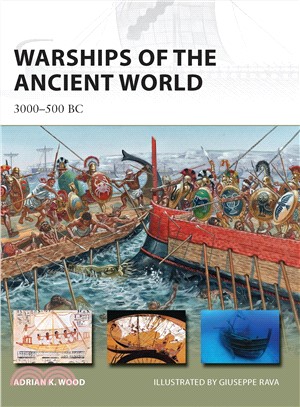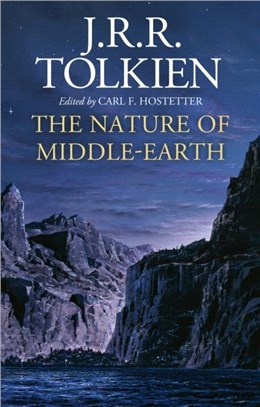Warships of the Ancient World
商品資訊
系列名:New Vanguard
ISBN13:9781849089784
出版社:Osprey Pub Co
作者:Adrian Wood
出版日:2013/01/22
裝訂/頁數:平裝/48頁
規格:24.8cm*18.4cm*0.6cm (高/寬/厚)
商品簡介
作者簡介
相關商品
商品簡介
The world's first war machines were ships built two millennia before the dawn of the Classical world. Their influence on the course of history cannot be overstated since they allowed war to be carried to distant lands, allowing for the first time the rise of empires unrestricted by maritime boundaries. The same ships enabled early Mediterranean nations to explore the Atlantic and Indian Oceans and circumnavigate Africa, while leaving a significant impact on the culture and military thought of later civilisations.
The famed triremes and penteres of the Classical world were the result of centuries of technological advance and experience. A wide variety of galleys and other types of warships were built by successive civilisations, each with their own distinctive appearance, capability and utility. The earliest of these were the Punt ships and the war galleys of Egypt which defeated the Sea People in the first known naval battle, along with the contemporary ships of Minoan Crete, the first sea power. Following the fall of these civilisations, the Phoenicians built biremes and other vessels with which they created the first Mediterranean-wide trade empire, while in Greece the ships described in detail in the 'Trojan' epics established a tradition of warship building culminating in the pentekonters and triaconters which allowed the Greeks to compete for hegemony on the seas.
The warships of the period are abundantly illustrated on pottery and carved seals, and depicted in inscriptions and on bas-reliefs. A number of ships have also been excavated, from Egypt to Sicily, along with marine artefacts such as anchors and a bronze ram, while there are numerous finds of armour and weapons of the types used by naval personnel in this era. To this material evidence can be added literature from such disparate sources as Homer, the Old Testament and the Classical world's first historians.
The subject has been intensively studied for two and a half millennia, culminating in the contemporary works of authoritative scholars such as Morrison, Wallinga, Rodgers and Casson. Finally there are a number of modern reconstructions, both virtual and real, which have shed new light on the technology and usage of vessels of this period.
To date there are no works covering this subject which are accessible and available to non-academics. This can only be considered a serious oversight due to the importance of this fascinating period.
The famed triremes and penteres of the Classical world were the result of centuries of technological advance and experience. A wide variety of galleys and other types of warships were built by successive civilisations, each with their own distinctive appearance, capability and utility. The earliest of these were the Punt ships and the war galleys of Egypt which defeated the Sea People in the first known naval battle, along with the contemporary ships of Minoan Crete, the first sea power. Following the fall of these civilisations, the Phoenicians built biremes and other vessels with which they created the first Mediterranean-wide trade empire, while in Greece the ships described in detail in the 'Trojan' epics established a tradition of warship building culminating in the pentekonters and triaconters which allowed the Greeks to compete for hegemony on the seas.
The warships of the period are abundantly illustrated on pottery and carved seals, and depicted in inscriptions and on bas-reliefs. A number of ships have also been excavated, from Egypt to Sicily, along with marine artefacts such as anchors and a bronze ram, while there are numerous finds of armour and weapons of the types used by naval personnel in this era. To this material evidence can be added literature from such disparate sources as Homer, the Old Testament and the Classical world's first historians.
The subject has been intensively studied for two and a half millennia, culminating in the contemporary works of authoritative scholars such as Morrison, Wallinga, Rodgers and Casson. Finally there are a number of modern reconstructions, both virtual and real, which have shed new light on the technology and usage of vessels of this period.
To date there are no works covering this subject which are accessible and available to non-academics. This can only be considered a serious oversight due to the importance of this fascinating period.
作者簡介
Adrian's fascination with ancient history began with a gift of Timpo toy Roman soldiers at the age of four, and continued through his Honours degree in Ancient History and Classical Archaeology at Sheffield University. Having been previously employed as a professional musician, motorcycle courier, and fork-lift driver, Adrian currently works at the NERC Isotope Geoscience Laboratory. In addition to reading about and researching ancient warfare, he harbours a deep love of music, and enduring affection for dogs and other animals, and a lifelong addiction to wargames, role-playing games, and boardgames of all sorts.
主題書展
更多
主題書展
更多書展今日66折
您曾經瀏覽過的商品
購物須知
外文書商品之書封,為出版社提供之樣本。實際出貨商品,以出版社所提供之現有版本為主。部份書籍,因出版社供應狀況特殊,匯率將依實際狀況做調整。
無庫存之商品,在您完成訂單程序之後,將以空運的方式為你下單調貨。為了縮短等待的時間,建議您將外文書與其他商品分開下單,以獲得最快的取貨速度,平均調貨時間為1~2個月。
為了保護您的權益,「三民網路書店」提供會員七日商品鑑賞期(收到商品為起始日)。
若要辦理退貨,請在商品鑑賞期內寄回,且商品必須是全新狀態與完整包裝(商品、附件、發票、隨貨贈品等)否則恕不接受退貨。
























